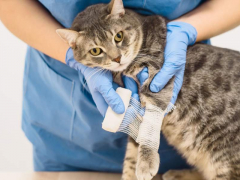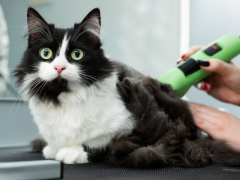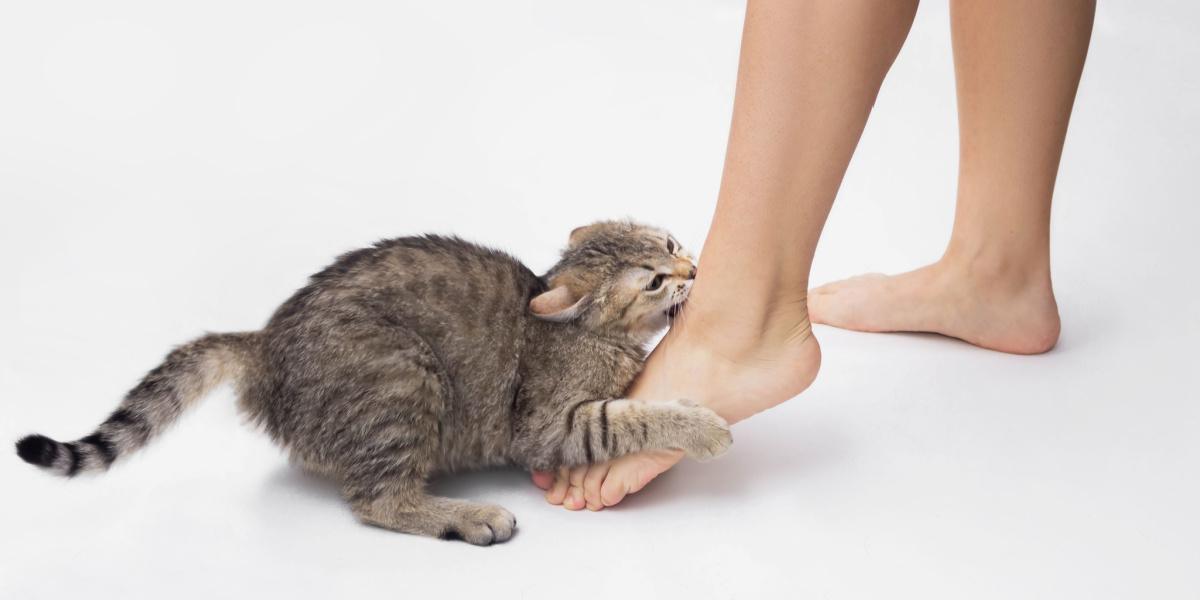
Why, oh why, do cats sometimes like attacking ankles? It’s a common lament from cat owners! One minute you walk by your cat sleeping peacefully, and the next minute, your usually loving cat bites at your feet and nips at your ankles. Is it for attention? Are they hungry? Bored, stressed, or just aggressive?
It can be a worry for cat owners to think they may have an aggressive cat, but attacking ankles is usually not aggressive cat behavior at all. Mostly, this behavior comes down to inappropriate play. However, there are some instances that might indicate a deeper problem, such as stress or a medical condition.
Read on to find out more about this undesirable behavior.
Why Do Cats Attack Ankles?
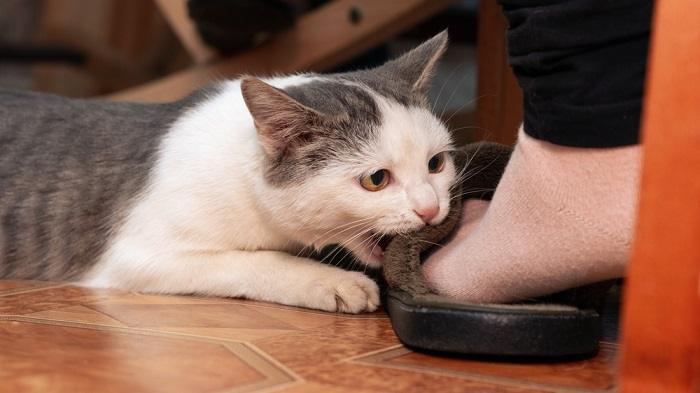
There are multiple possible reasons a cat might decide to attack the feet and ankles of you or someone else in their vicinity.
It is much easier to know how to stop your cat from attacking your ankles if you know why they might be doing it. There are a few causes of this roughhouse type of play. Knowing the underlying instinct will help when we come to redirect our cats away from this painful act.
1. Hunting Instincts

All cats have a natural hunting instinct, and the passing feet of a person is the perfect target to practice hunting skills!
Cats are natural hunters. They have naturally agile bodies, sharp teeth, and claws. Some kitties have a high prey drive, and just cannot resist any type of moving target on which to practice their hunting skills! Feet are just the right size of ‘prey’ for cats. Cats usually hunt small mammals and birds, and their jerky movements are irresistible to a cat ready to pounce!
If your cat is always attacking your ankles, swatting at your feet, and mouthing at your socks, it may be that this seemingly unprovoked cat attack is actually due to innate feline behavior to hunt.
Also Read: How Do Cats Hunt?
2. Playtime
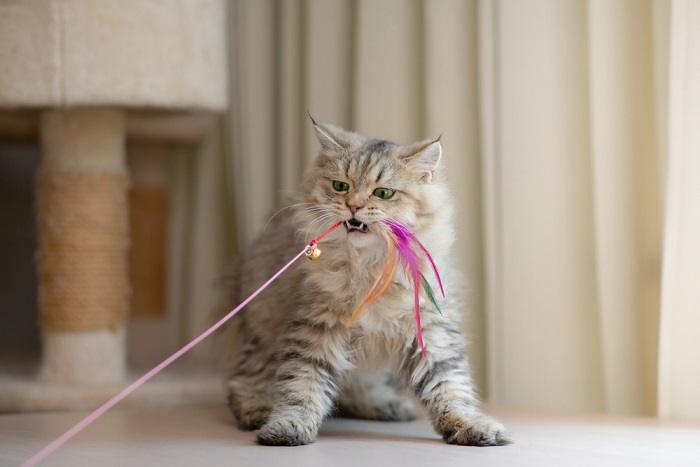
If your cat’s play style is more on the aggressive side, it may mean that your cat is bored and in need of more enriching playtime.
Most cat play is based around hunting-like behaviors, as kittens learn to hunt through play with their siblings. Kittens are active and enthusiastic and need plenty of play and stimulation to calm their natural exuberance. However, adult cats also need play sessions and can become bored and frustrated when opportunities are not available.
Play aggression can occur when cats are deprived of enrichment and play opportunities. This leads to exaggerated and hyper-excitable reactions when the prospect of play presents itself. Cats who frantically chase any moving object and get very rough with their teeth and claws can still be playing, just in a very uninhibited way.
Also Read: How To Deal With Food Aggression In Cats
3. Attention Seeking
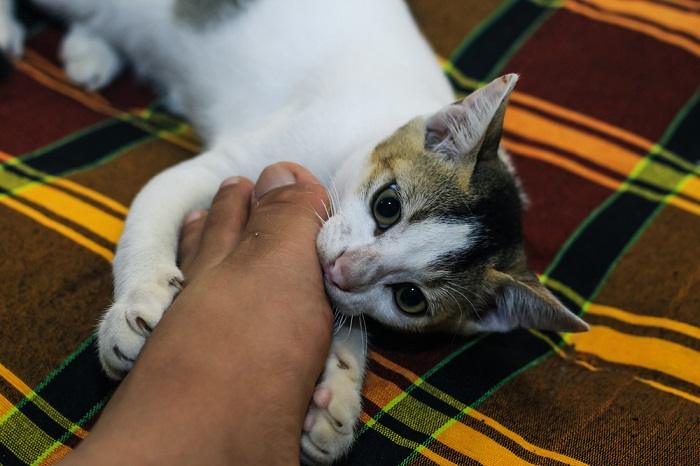
Cats learn quickly which behaviors will get your attention. Biting your ankles and feet is one of them!
Cats are clever creatures, and they soon learn what behaviors get your attention! Cats often bond strongly with their closest humans, and while this is lovely, it does mean that they can become very demanding of your presence and attention. Cats can use play behaviors such as biting and pouncing to ask for food, attention, play, or cuddles.
Also Read: Why Does My Cat Bite Me When I Pet Her?
4. Stress Or Anxiety
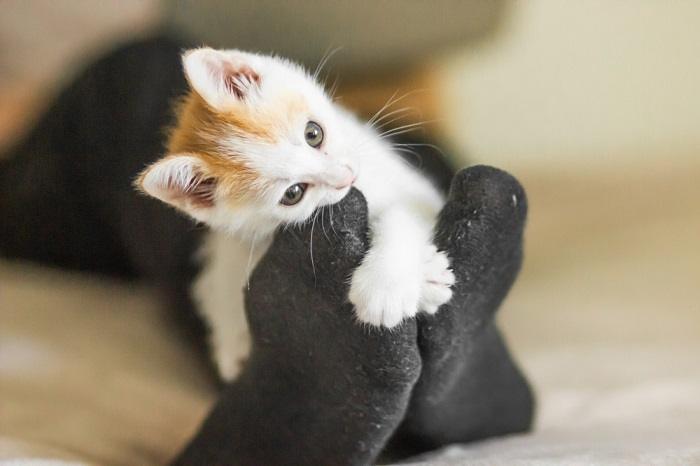
Just like people, cats will often act out when stressed or anxious. Attacking ankles can be one of these ways of acting out.
Cats can show distress in a variety of ways. These signs range from the subtle to the obvious. Changes to body posture, vocalization, hiding away, urinating outside the litter box, and aggression are all behavior problems that could be linked to anxiety. If something has changed in your household recently, such as a new pet, a new baby, or building work, your cat may be reacting to the changes negatively.
Also Read: Why Do Cats Yawn? A Veterinarian Explains
5. Medical Conditions
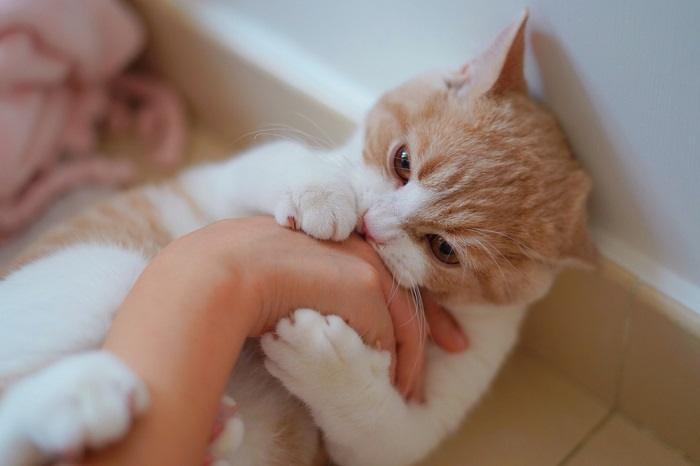
Aggression in cats can be a common symptom of an underlying medical issue.
There are some health conditions that can cause behavioral changes in cats. Pain can lead to cats responding differently than normal. These behaviors include hissing or biting at you when you go to pet them instead of their usual purrs. It can also make your cat more reactive and hypervigilant, and can often cause aggressive behavior.
Hyperthyroidism can also lead to behavioral changes. The increased thyroid levels cause cats to be skittish, reactive, and hyperactive. If your cat’s body language, daily routines, or reactions to you and other pets change, you might want to take them to a veterinarian to check that all is well.
Other common symptoms of hyperthyroidism include weight loss, a ravenous appetite, drinking, and urinating more.
Also Read: Why Is My Cat Drinking A Lot Of Water?
Is My Cat Just Aggressive?
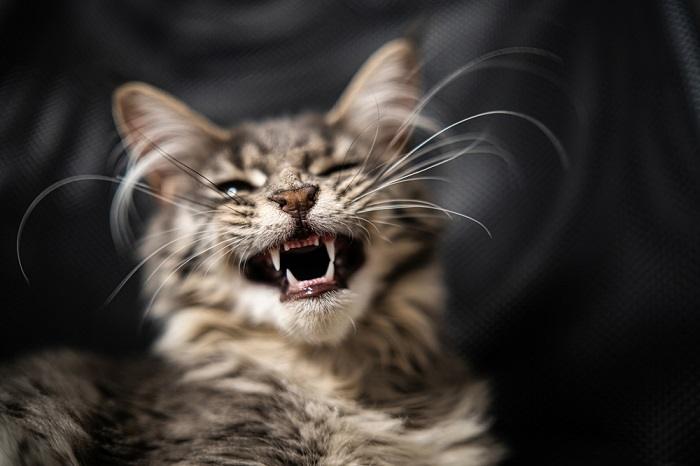
Cats don’t typically behave aggressively as a first choice when they feel threatened. They actually prefer to avoid or de-escalate conflict whenever possible.
Aggression is not really a character trait. It is unusual for a cat to respond aggressively without any provocation. Most cats use aggression as a last resort, preferring to de-escalate conflict with visual, postural, and body language cues before fighting.
If your cat is being actively aggressive, they will display signs such as growling, hissing, arched back, stiff posture, and a fluffed-up tail as well as biting. Play biting presents differently, with a more relaxed and playful posture and no vocalization.
When kittens play together, they soon learn the concept of ‘bite inhibition.’ This is all about how hard to bite when playing, compared to a serious bite at their prey. If kittens have learned this correctly, biting during play should consist of small ‘love bites’ rather than serious bites. These kinds of bites are unlikely to break the skin, although they may still be uncomfortable to experience.
Kittens who have been poorly socialized may fail to learn this trait and bite hard even when playing.
Also Read: How To Safely Play With A Cat, According To A Cat Behaviorist
How Do I Stop My Cat From Attacking My Ankles?
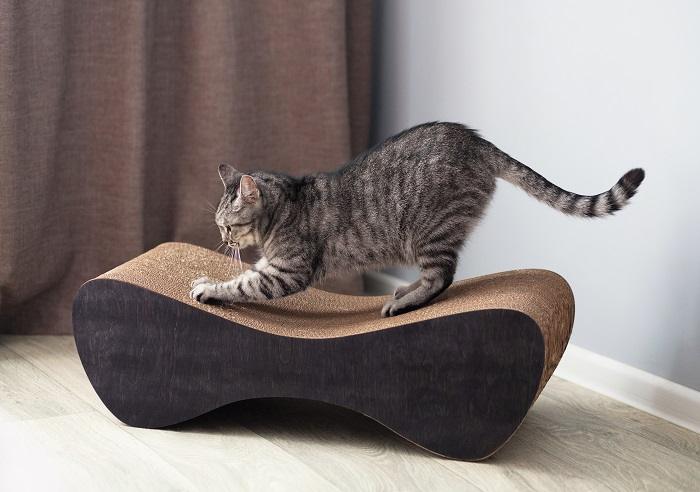
Understanding more about a behavior helps us to prevent it. In the case of a cat attacking ankles, we must first rule out the common triggers. If your cat has suddenly started showing aggressive behavior towards you, always check with a veterinarian to rule out stress, pain, and medical conditions.
It is also a good idea to make sure that your cat is being provided with regular meals of a high-quality, complete diet. Cats who are constantly hungry or unsure of when their next meal will be, or who are constantly hungry, will be more agitated and irritable – just like us!
Overenthusiastic hunting and play behaviors can be reduced in cats by providing plenty of play and enrichment time. Invest in some cat toys, and set aside time for play sessions with your cat – interactive play satisfies their hunting instincts and is also an excellent way to bond with your pet.
Consider adding scratching posts, cat trees, puzzle feeders, and other enrichment opportunities to their environment. This adds both mental and physical stimulation to their day and reduces boredom and frustration.
It is important to have a consistent response to ankle biting among family members. The best method is to redirect the behavior when it happens: stop moving, stay calm, and provide a toy for your cat to play with instead of you.
When your cat plays with something more suitable than your feet, provide positive reinforcement such as praise or treats. Never use your fingers or toes to play with kittens – it may seem cute when they’re tiny, but it soon becomes difficult to manage.
If you are concerned about aggressive behavior in your cat, consult a qualified behaviorist for more advice.
Also Read: The 5 Best Interactive Cat Toys for Bored Cats
Ankle Biting: Summing Up
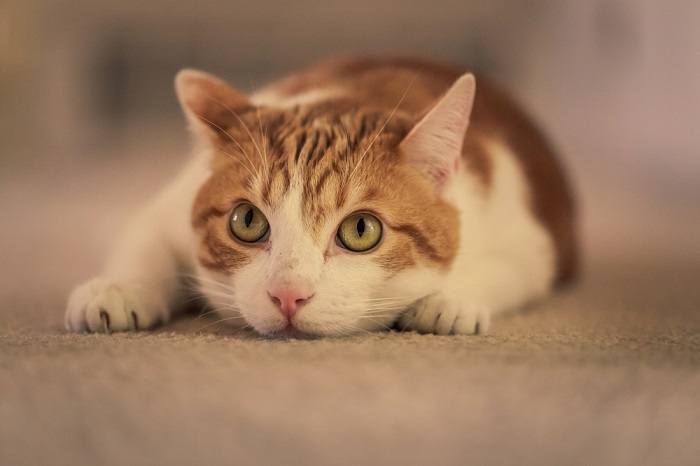
Cats who pounce and bite at ankles are usually just trying to play, albeit in an inappropriate way. Felines have a strong hunting instinct, and much of their play behavior is based on practicing their skills: chasing, pouncing, and biting.
However, stress, hunger, and some medical conditions can exacerbate aggressive play and should be ruled out first. Plenty of play sessions and enrichment will reduce your cat’s prey drive, and having a calm and consistent approach when ankle biting occurs will help to swiftly resolve this problem behavior.
Also Read: Why Do Cats Knead and Bite Blankets?
